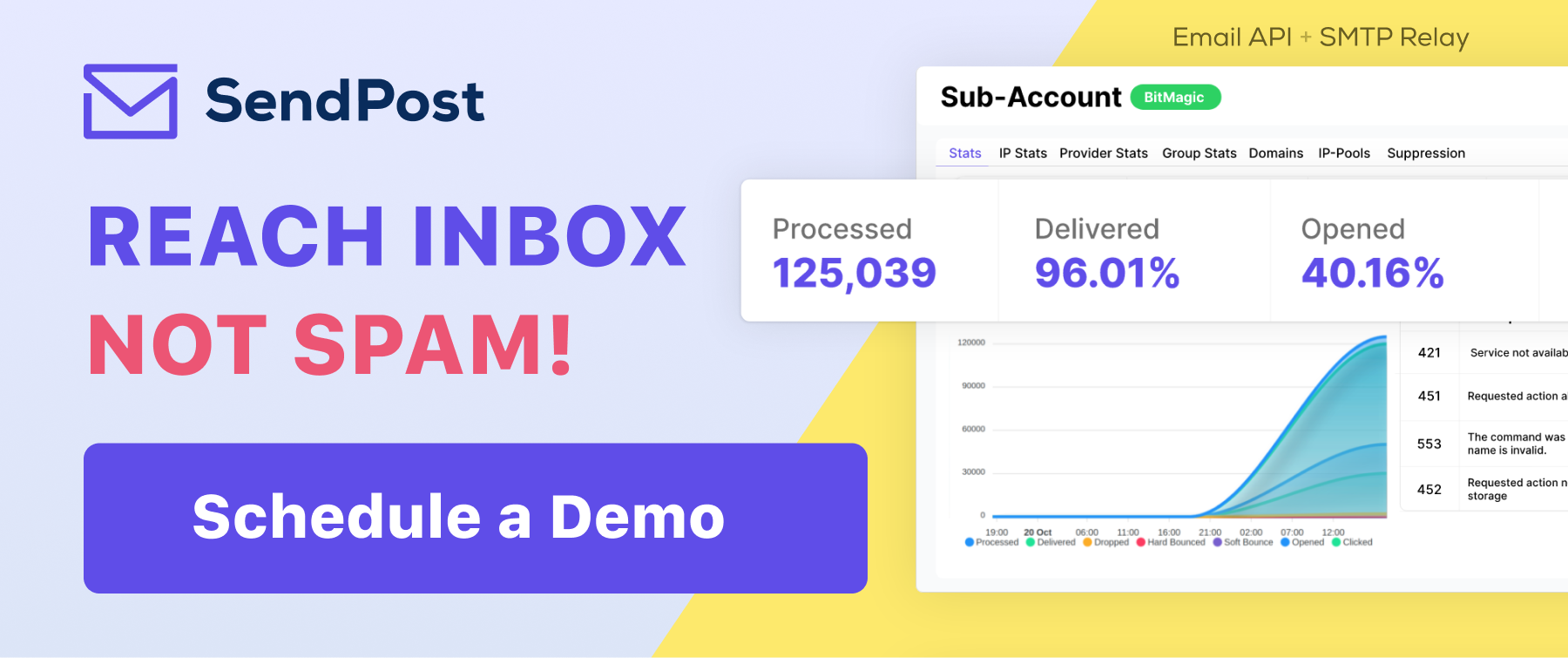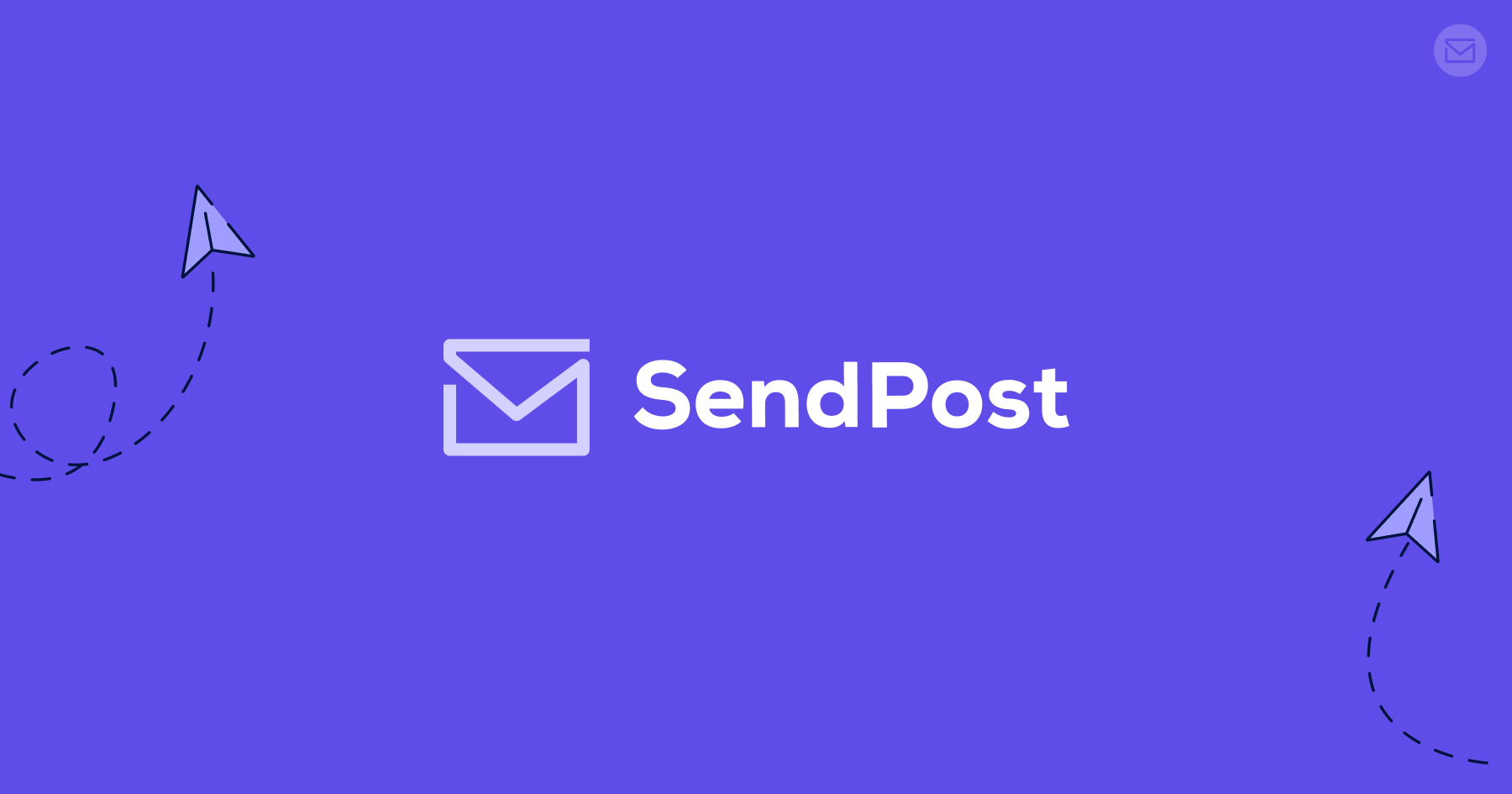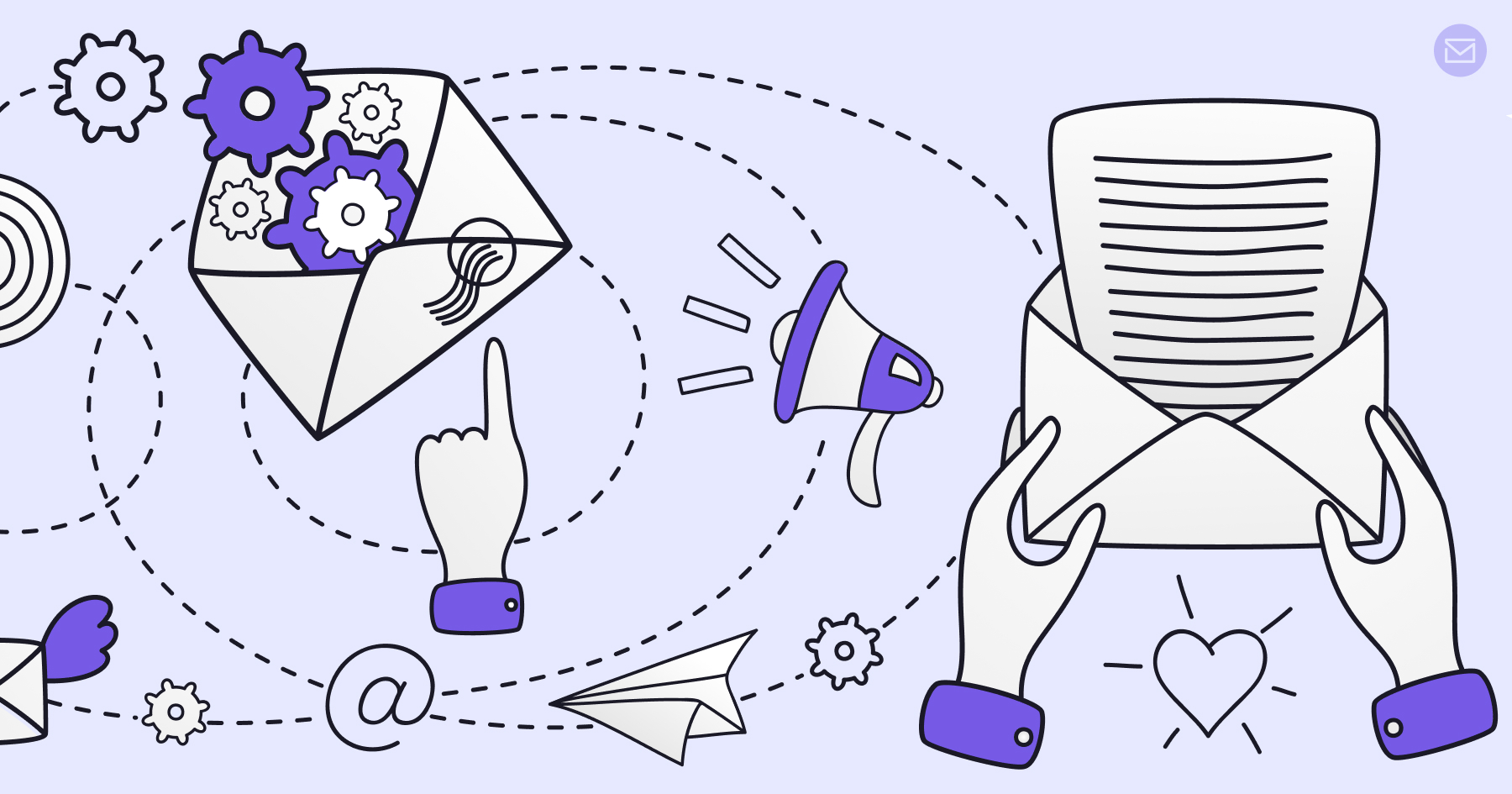SendPost Blog - Email API & SMTP
Tips for Writing Emails that Get Delivered and Read

Is your frustration growing as you watch your carefully crafted emails disappear into the vast void of the spam folder?
Before you blame the technical aspects like EPS, SPF, or ISPs for being the evil gatekeepers of inboxes, let's take a moment to reconsider.
It's true that these factors play a role, but there's another key element that often gets overlooked: your email writing style and content. Believe it or not, both style and content can determine whether your message lands in the inbox or gets banished to the depths of spam oblivion.
In this blog, we will explore the art of building a rapport with the inbox guardians by enhancing your email writing skills.
Let's discover the tips of crafting emails that not only get delivered but also get read.
Choose a Clear, Non-Spammy Subject Line: In the realm of email marketing, your subject line can make or break your campaign. It's the first thing your recipient sees and, as such, it significantly influences whether your email will be opened or land in the spam folder.
Spam filters are more sophisticated than ever, and they're designed to protect inboxes from unsolicited or potentially harmful content. As such, your subject line should be carefully crafted to avoid triggering these filters. Here are some specific tips to follow:
- Avoid ALL CAPS: Writing your subject line in all capital letters can make your email appear as if you're shouting at your recipients. It comes across as aggressive and unprofessional, and most importantly, it's a common tactic used in spam emails. Spam filters are likely to flag such emails, so it's best to avoid this style.
- Limit Excessive Punctuation: Overusing punctuation marks, especially exclamation points (!!!), question marks (???), and dollar signs ($$$), can trigger spam filters. They often give the impression of an overly promotional or misleading message, such as "Win big money!!!". A more refined approach would be, "Join our contest for exciting rewards."
- Steer Clear of Overpromising or Clickbait Phrases: Overpromising or sensationalistic phrases can be a quick ticket to the spam folder. Examples include, "Earn $10,000 today!", "Free gift inside!", or "You're a winner!". Not only do such subject lines risk being flagged as spam, but they also erode trust with your recipients if your email content doesn't deliver on those promises.
Instead, your subject line should be concise, clear, and genuinely represent the content of your email. Let's say you're promoting a new product, instead of saying, "Best deal ever!!! Amazing savings inside!", consider a subject line like "Introducing our latest collection - exclusive preview inside."
Humor or a bit of intrigue can sometimes help your email stand out, as long as it remains relevant and respectful to your audience. For example, if you're promoting a limited-time offer, instead of saying, "Hurry! Time is running out!!!", you might write, "Tick-tock: your exclusive discount awaits."
1) Keep Your Email Content Clean and Professional
Keep Your Email Content Clean and Professional: In email marketing, the content you deliver is as essential as the product or service you're promoting. Your email's body serves as a direct line of communication with your audience, so it's crucial to maintain a professional and organized layout.
Here's how to do that:
- Maintain a Consistent Format: Using a variety of font types, colors, sizes, or embedding too many images can make your email seem disorganized and spam-like. Instead, stick to a few, consistent, standard fonts and colors throughout your email to maintain a clean, professional look.
Your emails should be easy to read and navigate, which improves user experience and trust in your brand.
- Use Proper Punctuation and Spacing: Similar to maintaining a consistent format, using proper punctuation and spacing can improve the readability of your email. Avoid long paragraphs without breaks and excessive or inappropriate use of punctuation marks.
Your emails should flow naturally and logically, making it easier for your audience to absorb the information you're presenting.
- Avoid Spam-Trigger Words: Certain words or phrases, especially in the subject line and the first lines of your email, can trigger spam filters. Words such as 'free', 'win', 'cash', 'guaranteed', and 'no investment' are typically associated with spam emails.
Instead of saying, "Win a free trip to Paris!", you could say, "Enter our travel sweepstakes for a chance to explore Paris". It's the same exciting offer but framed in a less spam-like way.
2) Avoid Large Attachments and Multiple Links
Avoid Large Attachments and Multiple Links: In today's digital landscape, attachments and links are common in emails.
However, excessively large attachments or too many links may be flagged as spam.
- Large Attachments: Large attachments not only consume more bandwidth, but they also tend to slow down the loading time of your email, leading to a poor user experience.
They can also be flagged as potentially dangerous by some email providers. Instead, consider using cloud storage services like Google Drive, Dropbox, or OneDrive.
Rather than attaching a large document, you could upload it to a shared folder and then include the link in your email. For instance, "We've added the latest product catalog to our shared Dropbox folder. You can view it [here]."
- Multiple Links: Avoid stuffing your email with numerous links as it can appear spammy and may be flagged by spam filters. Ensure that the links you do include are relevant and provide value to your audience.
If you're sending an email promoting multiple products, consider creating a landing page with all the information and include a single link to that page in your email. That way, you're only including one link but still providing the same amount of value.
Following these guidelines helps ensure that your emails provide value to your audience, look professional, and, importantly, land in the inbox rather than the spam folder.
3) Be Consistent with Your Sending Address
Consistency helps build familiarity and trust with your recipients, and this extends to your sending address.
- Don't Frequently Change Your Sending Address: If you constantly switch your sending address, your recipients might not recognize who the emails are from, increasing the chances of your emails being marked as spam.
- Use a Branded Email Address: A branded email address (like name@yourcompany.com) is more professional and recognizable compared to generic free email addresses. It helps build credibility and can improve your email deliverability.
- Align Your Sending Address with Your Content: Make sure your sending address matches the content of your email. If your email content is about your latest product line, but your sending address is newsletter@yourcompany.com, it might confuse your recipients.
4) Request to Be Added to Contacts
One way to increase the chances of your emails landing in the inbox and not the spam folder is to be added to your recipients' contact list. When an email comes from a known contact, email providers are less likely to flag it as spam.
However, asking your subscribers to add you to their contacts isn't something to be taken lightly. It's a request that demands a bit of effort from your subscribers, so your request should be clear, respectful, and provide a compelling reason for them to do so.
Here's an example of how you might phrase such a request:
"Dear [Recipient's name],
Thank you for being a loyal subscriber to our newsletter. To ensure that our emails continue to reach you and don't accidentally end up in the spam folder, could you take a moment to add us to your email contacts? By doing so, you'll always stay informed about our latest news and special offers.
Here's how you can do it:
[Include step-by-step instructions on how to add an email to contacts, considering different email providers like Gmail, Outlook, etc.]
We appreciate your support and don't want you to miss out on any updates from us.
Thank you,
[Your Name / Your Brand]"
By providing a clear reason and instructions for adding your email to their contacts, you're making it as easy as possible for your subscribers to follow through.
Also, remember to only send this request to subscribers who have explicitly opted-in to receive your emails. Sending such a request to a non-consenting recipient might have the opposite effect and result in your email being marked as spam.
5) Use Storytelling in Your Emails
One of the most effective ways to ensure your emails are not just opened but read is by leveraging the power of storytelling. Stories resonate with us as humans; they stir our emotions, capture our interest, and are more memorable than plain facts or instructions.
Here's how you can do it:
- Create a Hook: The first few lines of your email are crucial. They should instantly grab the reader's attention and make them want to continue reading. You can start with a surprising fact, a provocative question, or a bold statement that relates to your email's main theme.
For example: "Did you know that 95% of our users increased their productivity by using our tool?"
- Establish a Problem: After grabbing the reader's attention, present a relatable problem or challenge that your reader might be facing. This builds empathy and holds their interest because it's relevant to them.
For example: "Like many professionals, you might be struggling with managing your workload and meeting deadlines."
- Provide a Solution: Once you've presented the problem, introduce your product or service as the solution. This is where you can elaborate on the benefits and features of what you're offering. Show how it addresses the problem you've highlighted.
For example: "Our productivity tool is designed to streamline your tasks, helping you manage your time effectively."
- Promise a Positive Outcome: Lastly, paint a picture of success or the positive outcome that will result from using your product or service. This gives your readers something to look forward to and motivates them to take action.
For example: "With our tool, you'll not only meet your deadlines, but you'll also have more time to focus on what you love doing."
- Call-to-action: Add a call-to-action to prompt the reader to take action.
For example, 'Try our tool for free for next 14-days’
Conclusion
Now that you know these 5 tips for writing emails that can get your emails land into inboxes, and avoid spam folders, incorporate them in your emails for the next campaign.
You might not see results instantly but gradually you can build a strong, positive rapport with inbox service providers and your emails can stop going to the spam folder.
When it comes to reliable email delivery, SendPost is here to help. SendPost provides an Email API and SMTP relay for developers, software businesses, and ESPs. With our tools, expertise, and support, you can ensure that your emails are delivered consistently and effectively. Don't let your email campaigns fall short—partner with SendPost for reliable email delivery solutions.








